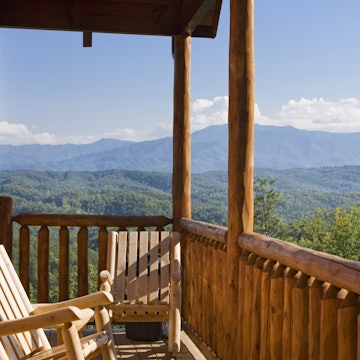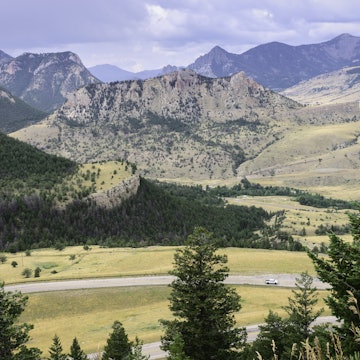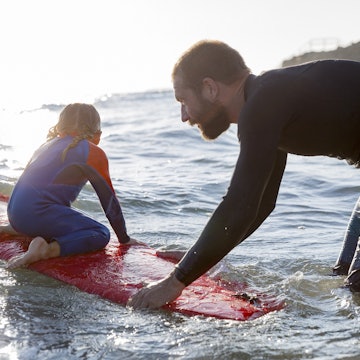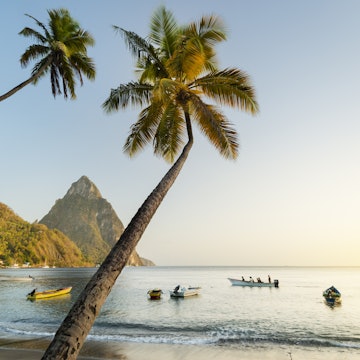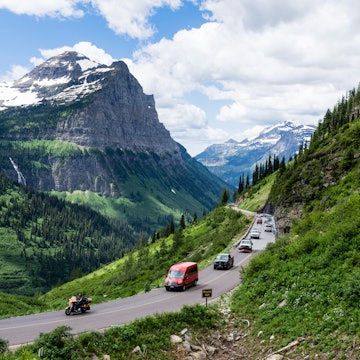
5 of the best road trips in Yellowstone National Park
Supported by
Nov 26, 2025 • 6 min read

Bison near the Roosevelt Arch at the North Entrance to Yellowstone National Park. BlazingBighornStudios/Shutterstock
Yellowstone National Park is vast. It encompasses more than 3400 sq miles and it includes more than 450 miles of roads, providing plenty of space to explore. Driving yourself means you can spend as much time as you like doing the best things that Yellowstone has to offer, whether that's gazing at geysers or hiking the 900 miles of trails.
Here's our pick of the best driving routes in Yellowstone. However, before visiting any US national park, visitors should be aware that staffing cuts in the National Park Service (NPS) have had an ongoing impact on the amenities available.
From our sponsor
Adventure shouldn’t mean going offline. Stay connected on every trip with Starlink — fast, reliable, low-latency internet wherever you roam.
The Mini Kit is compact and lightweight with a built-in Wi-Fi router — great for road trips, camping, RVs, and outdoor adventures across the U.S. and approximately 150 other countries and territories.
Starlink is now offering the Mini Kit for $229 (previously $299). Visit www.starlink.com/roadtrip to learn more.

1. Grand Loop
The ultimate Yellowstone road trip
Start/finish: Any of Yellowstone's five entrances
Approximate distance: 142 miles
Time: 2–3 days
Yellowstone National Park's main roads create a "figure-eight" shape, so driving around the exterior of both loops to make a "Grand Loop" is a great way to hit many of the park's highlights. Two or three days is reasonable, but the park can keep an avid explorer busy for far longer. Enter the park from any of its five entrances and proceed either clockwise or counterclockwise around the exterior of the figure eight until you've returned to your original entrance.
Driving the Grand Loop will bring you to many of the park's most popular geothermal areas, including Old Faithful, Midway Geyser Basin, Norris Geyser Basin, Mammoth Hot Springs, and West Thumb Geyser Basin. It will also bring you through Hayden Valley, which is a great place to look for wildlife, to Tower Fall, and the Grand Canyon of the Yellowstone, among other sites.
Detour: Combine a trip to Yellowstone with a visit to Grand Teton National Park, which is just beyond Yellowstone's South Entrance.

2. Upper Loop
Best route for Yellowstone's scenic wonders
Start/finish: Yellowstone's North Entrance
Approximate distance: 80 miles
Time: 1–2 days
Yellowstone's Upper Loop is a highlight reel of scenic wonders. Start at the park's North Entrance, just outside Gardiner, Montana, and explore the Mammoth Hot Springs area, including the famous terraces. Allow at least a full day to drive this loop, including Tower Fall, Grand Canyon of the Yellowstone – be sure to check out Artist Point – as well as Mt Washburn and Norris Geyser Basin.
Detour: Take a side trip from the Tower-Roosevelt area into Lamar Valley, which has some of the best wildlife viewing in the park.

3. Lower Loop
Best drive for geysers, wildlife, and more
Start/finish: Start and end in Jackson, Cody, or West Yellowstone
Approximate distance: 96 miles
Time: 1–2 days
Yellowstone's Lower Loop covers some of the park's most beloved features, including Old Faithful and the Hayden Valley. The loop itself is 96 miles, but you'll also need to add the distance to and from your entrance and gateway town of choice: select from Jackson or Cody, Wyoming, or West Yellowstone, Montana.
This route gives you a chance to see Old Faithful, Norris Geyser Basin, Artists Paintpots, Midway Geyser Basin and the Grand Prismatic Spring, West Thumb Geyser Basin, Bridge Bay, Fishing Bridge, Grand Canyon of the Yellowstone, and Hayden Valley, among other highlights. There's so much to do you might like to plan more than one day for exploration.
Planning tip: On a trip during summer months, try to visit the park's most popular attractions during off-peak hours, which means early or late in the day, to beat the crowds and make parking easier.

4. Geyser gazing road trip
Best drive to Yellowstone's most accessible geysers and thermal features
Start/finish: Yellowstone's South Entrance – Yellowstone's North Entrance
Approximate distance: 95 miles
Time: 1–2 days
If you love fantastical geysers, multicolored hydrothermal springs, bubbling mud and hissing steam, then take a drive up the park's western side for a glimpse at some of Yellowstone's most incredible sights.
The park contains more than 10,000 such hydrothermal features – including over 500 geysers – and this route showcases some of the most fascinating ones that are easily accessible. Start from the South Entrance, explore West Thumb Geyser Basin, and head west towards Old Faithful and the Upper Geyser Basin. Continue west and north exploring other hydrothermal areas, such as Midway Geyser Basin, Grand Prismatic Spring, Fountain Paint Pot, Norris Geyser Basin, and Mammoth Hot Springs, among many others, eventually exiting through the North Entrance.
Planning tip: Pack a cooler and enjoy lunch at one of the numerous picnic areas along this route. Be sure to leave the picnic site cleaner than you found it, and always be aware of bears and other wildlife.

5. Yellowstone's wildlife safari
Top driving route to see Yellowstone's wildlife
Start/finish: Yellowstone's East entrance – Yellowstone's Northeast Entrance
Approximate distance: 91 miles
Time: 1–2 days
Yellowstone is home to a huge amount of wildlife, including 300 species of birds and 67 different types of mammals, with big-hitters being the black bears, grizzly bears and gray wolves. The challenge is spotting them – where the animals are and whether or not you see them depends on seasons, weather, food availability, and luck.
Begin your wildlife adventure at the East Entrance, making your way along the northern shore of Yellowstone Lake (keep an eye out for grizzlies near Fishing Bridge). Then proceed north through the Hayden Valley, stopping in pullouts to scan the valley for bison, black bears, elk and wolves. Head north over Dunraven Pass, keeping an eye out for animals by Mt Washburn, before heading east at Tower-Roosevelt into the Lamar Valley, which is one of the best places in the park to spot gray wolves and herds of bison.
Planning tip: Be sure to bring your binoculars, spotting scope, and long camera lenses. Sometimes wildlife can be quite far away, and you must keep your distance. Stay a minimum of 100yd from bears and wolves and 25yd from all other animals.

Top tips for drivers in Yellowstone
Be sure to keep your eye on the gas gauge and bring water and food along with you. Also, check the roads you'll need will be open when you plan on coming. Most of the park's roads are closed for much of the year (generally closing in early November before reopening in April or May). Services within the park are also very limited outside of peak season, so be prepared.
Parking can be difficult at popular places – try to aim for early or late in the day to avoid having to wait for a spot. If you're driving an alternative fuel vehicle, be sure to check on fueling station availability. Driving yourself offers freedom and the opportunity to explore some lesser-known sites that might not be part of organized tours, but be sure to see the park's tips for drivers. If you'd rather leave the driving to someone else, there are numerous tour options available.
However you visit, brush up on bear safety and read the park's safety advice on wildlife, environmental hazards, hydrothermal features, and other things to keep in mind.
Supported by Starlink
As a travel entertainment and inspirational media outlet, we sometimes incorporate brand sponsors into our efforts. This activity is clearly labeled across our platforms.
Funding for this story is provided by Starlink. All editorial views are those of Lonely Planet alone and reflect our policy of editorial independence and impartiality.
With sponsored content, both Lonely Planet and our brand partners have specific responsibilities:
-
Brand partner
Only provides financial support and their logo. Doesn't make revisions or approve the story.
-
Lonely Planet
We fully control the creative and editorial approach, just like any other featured story.







